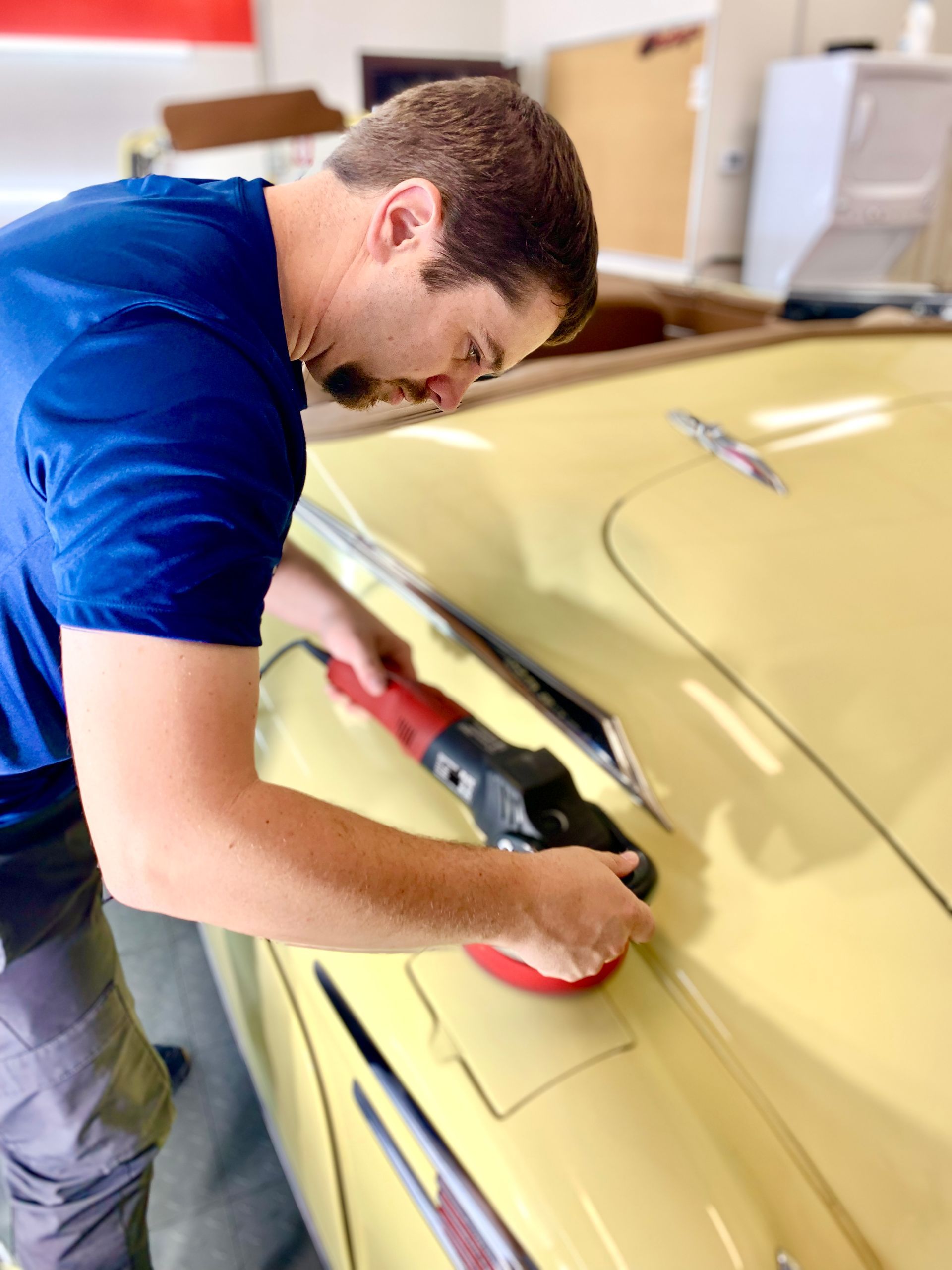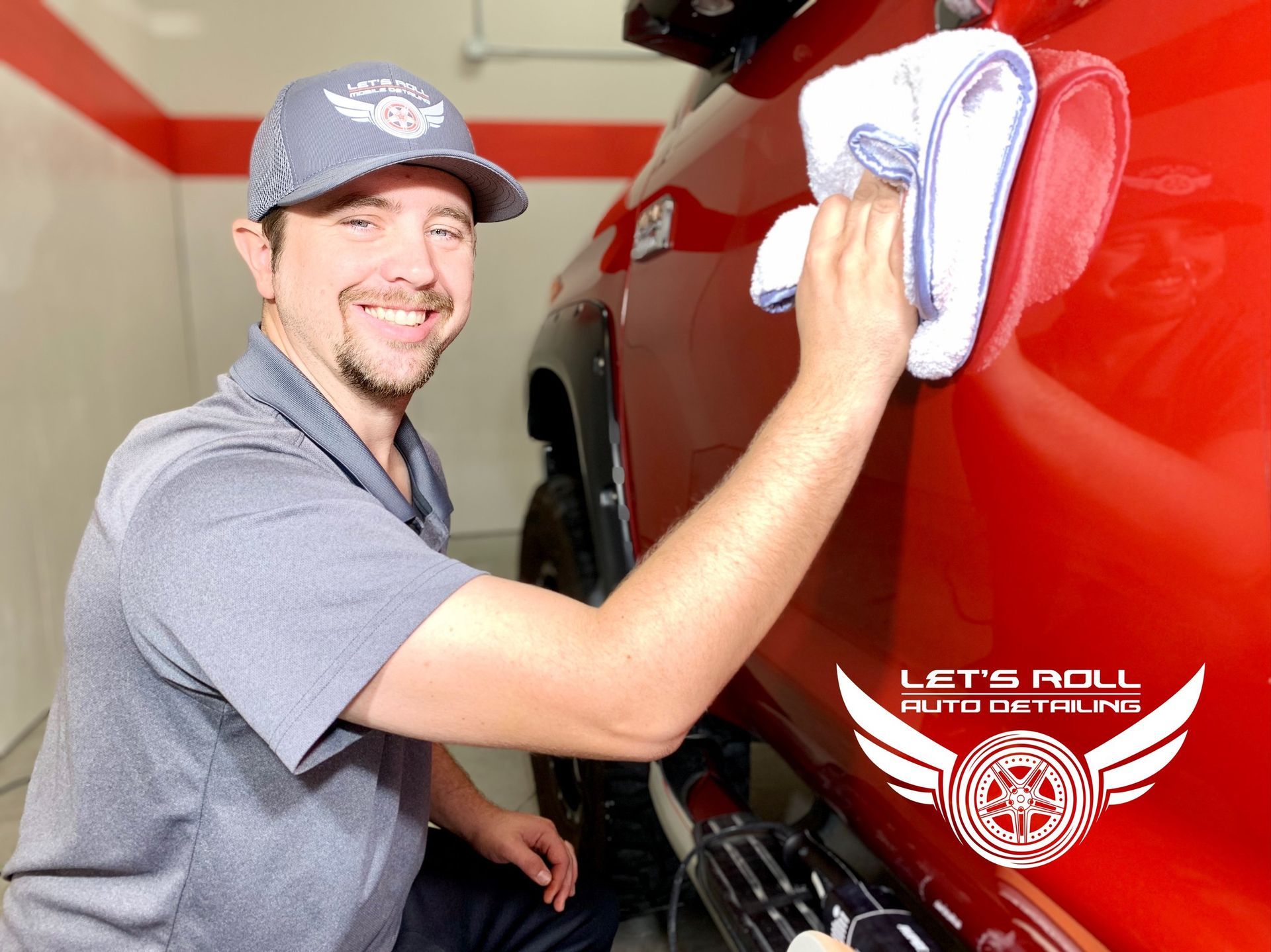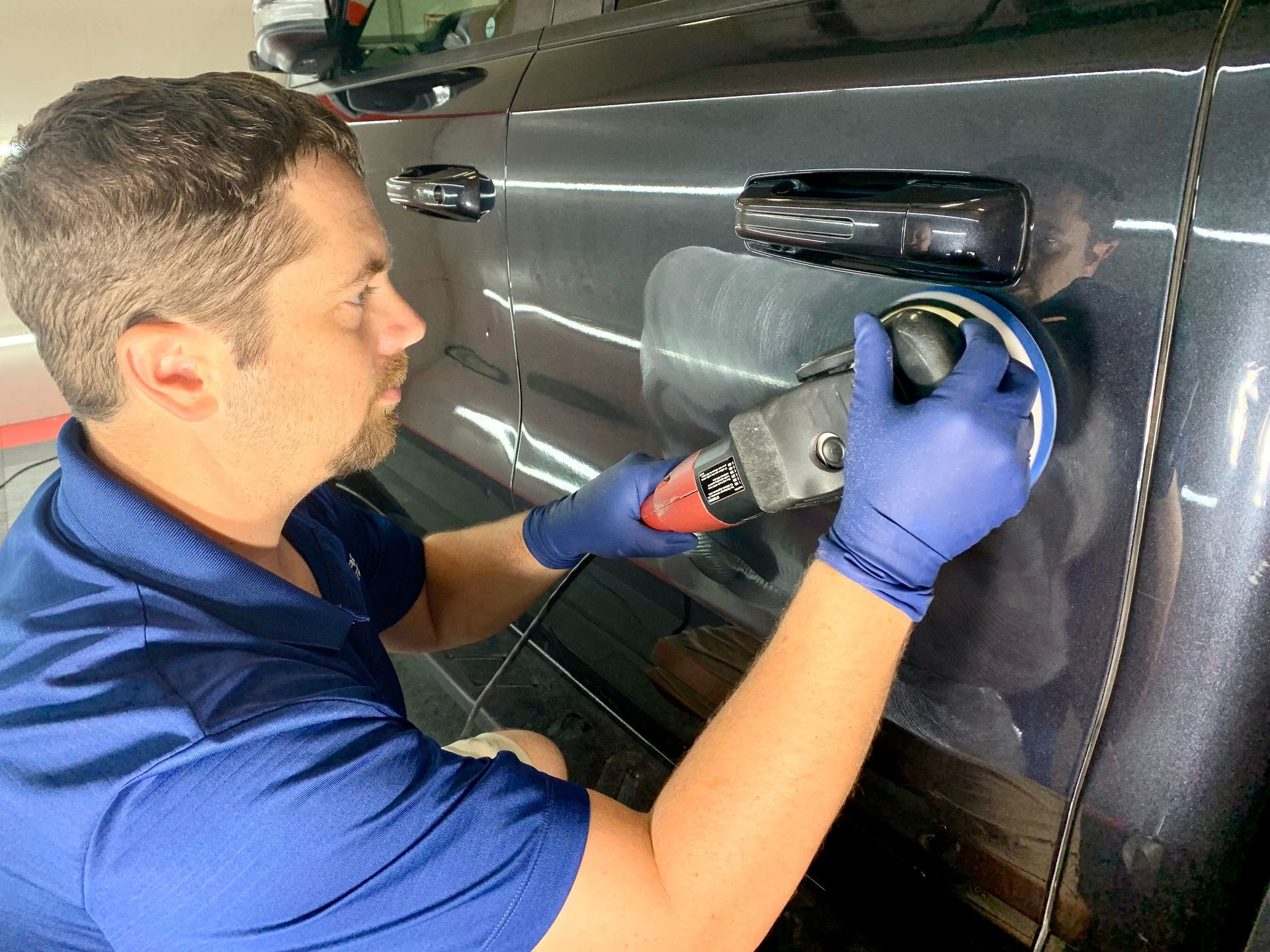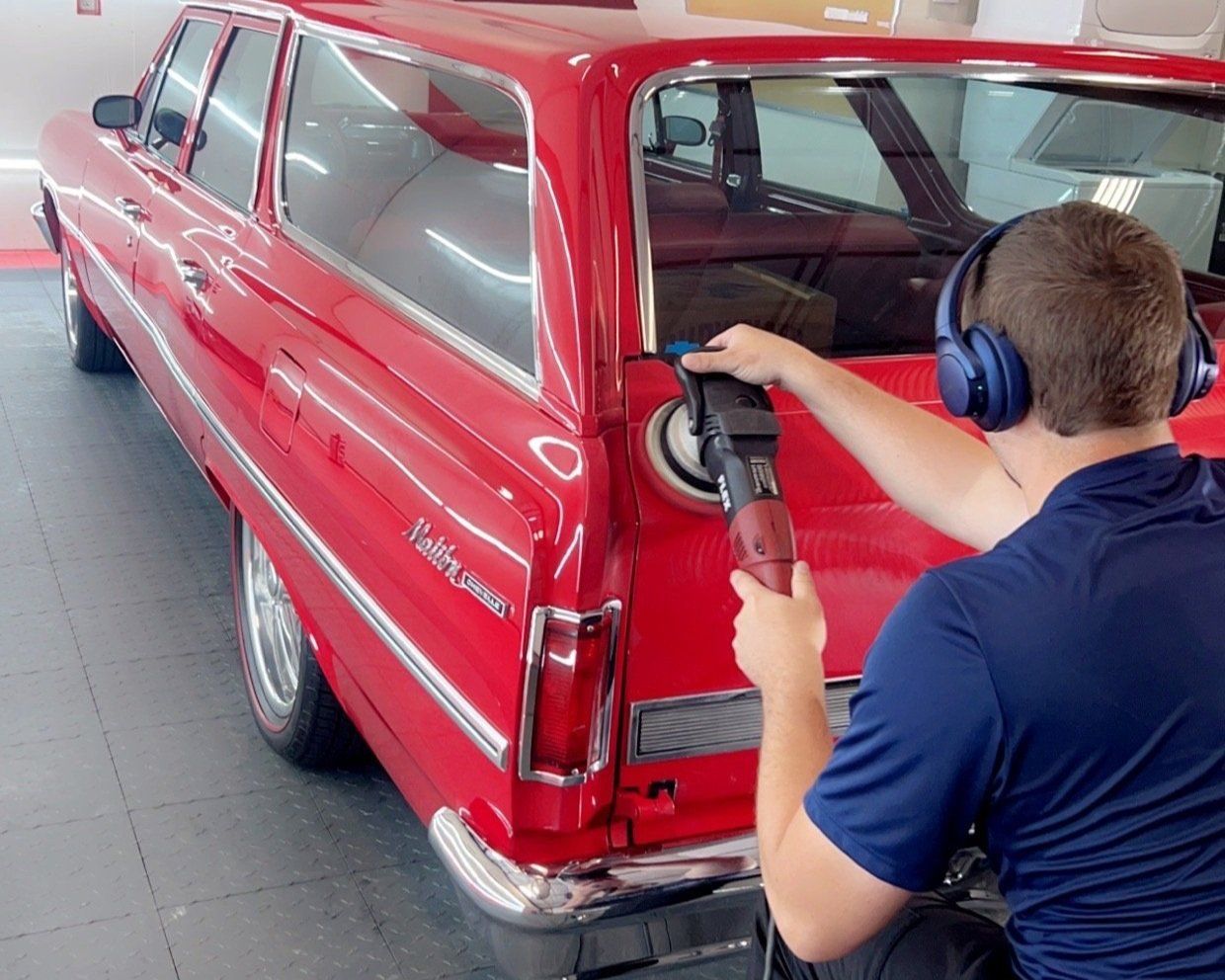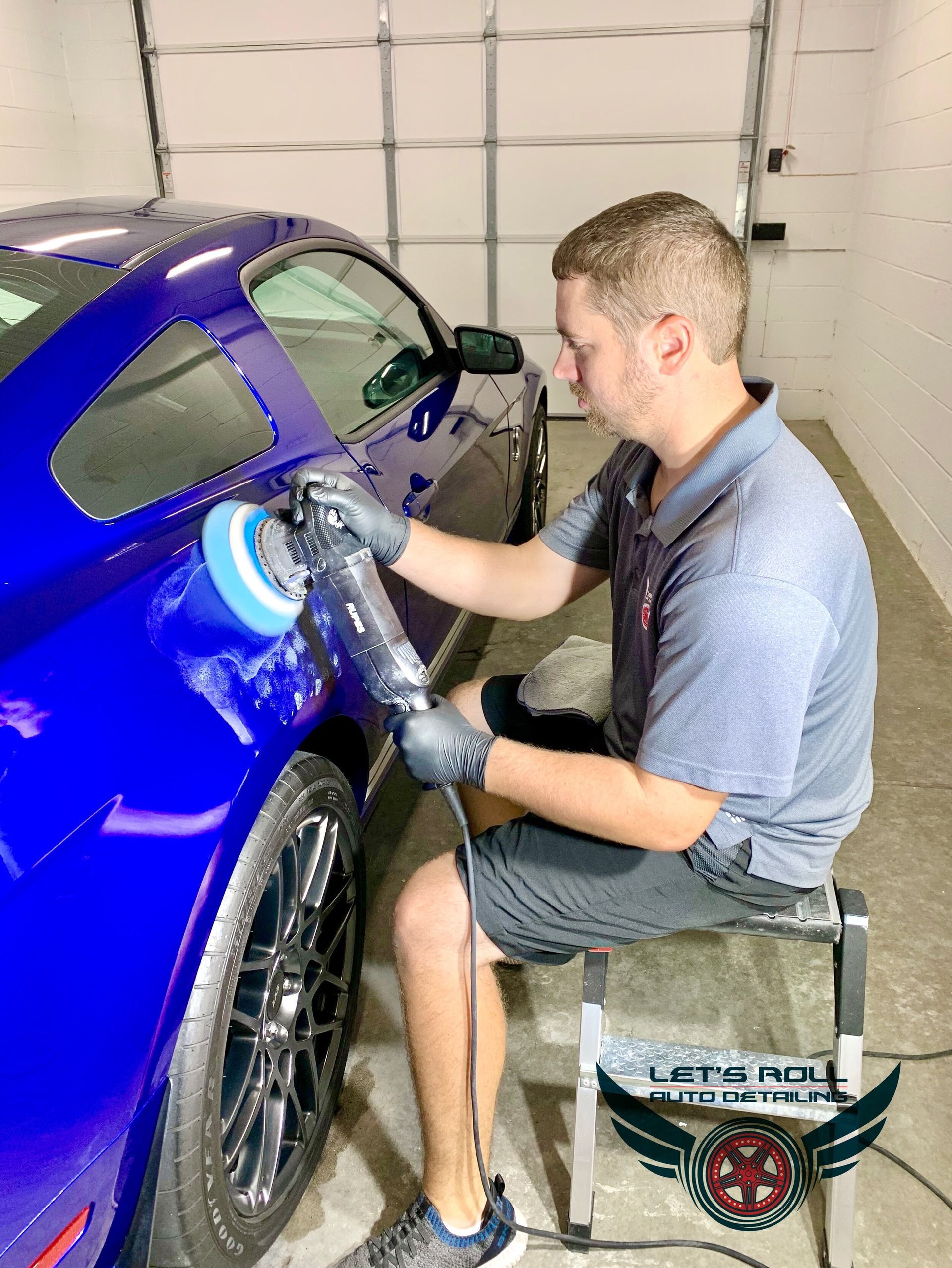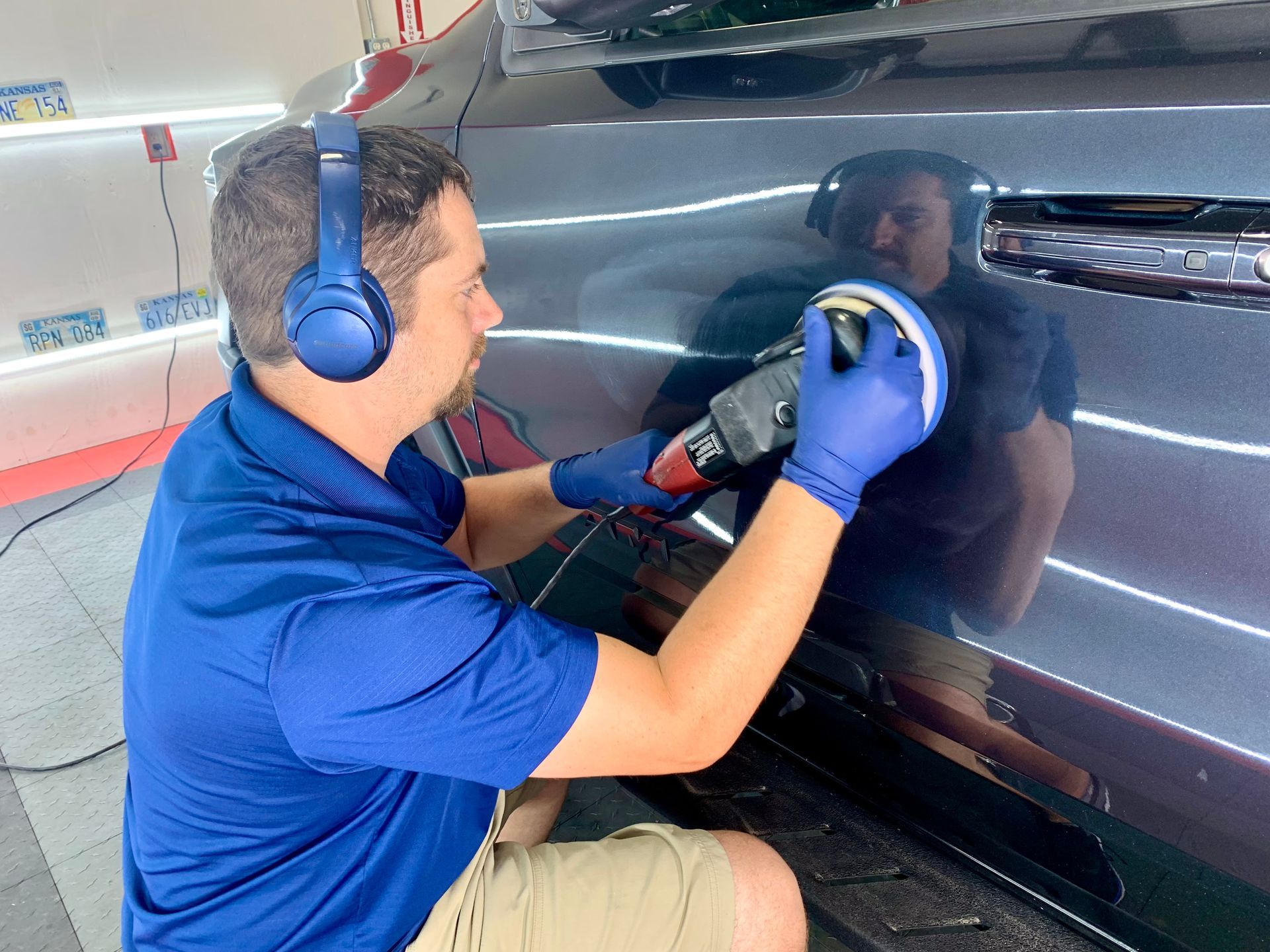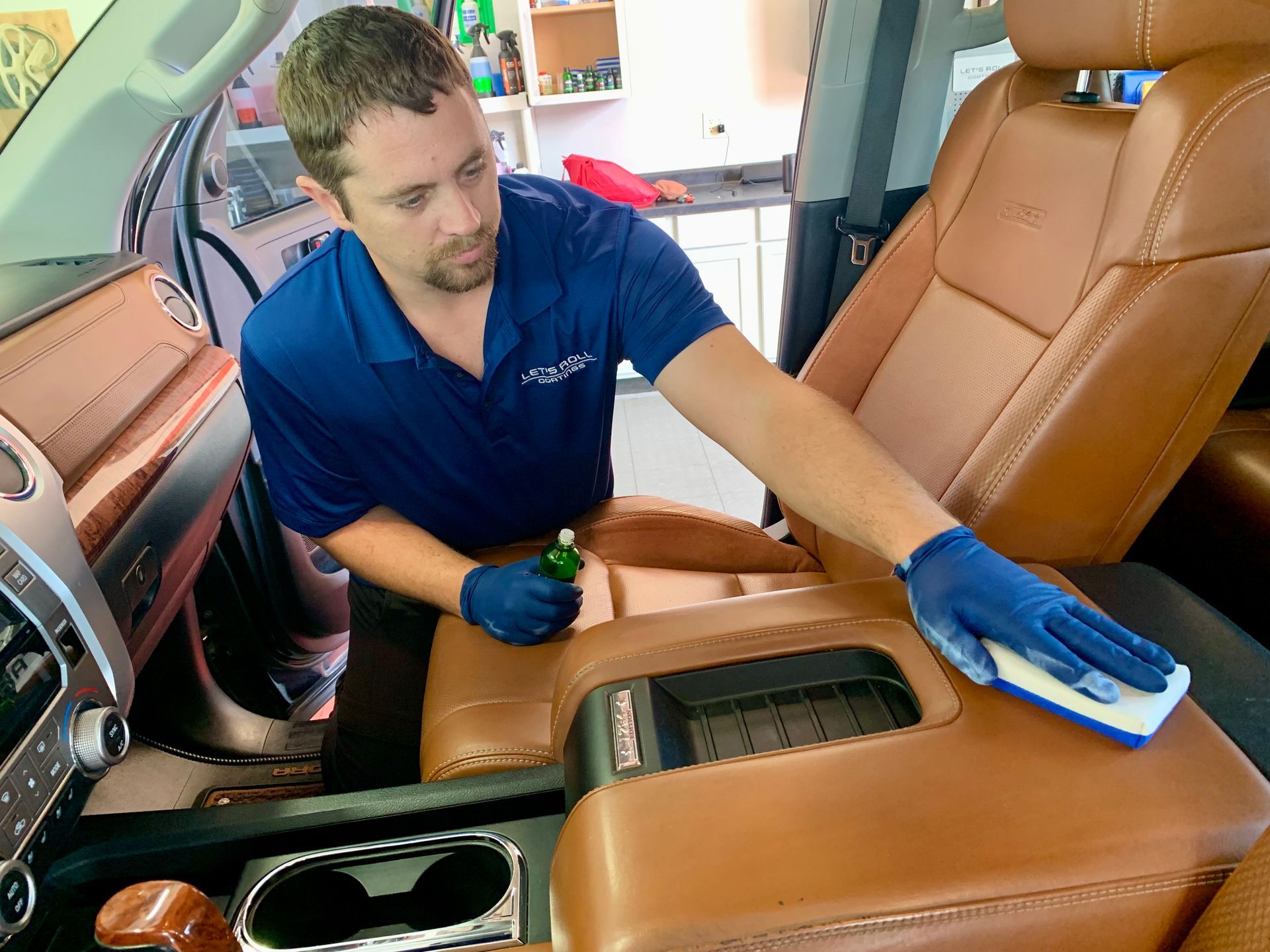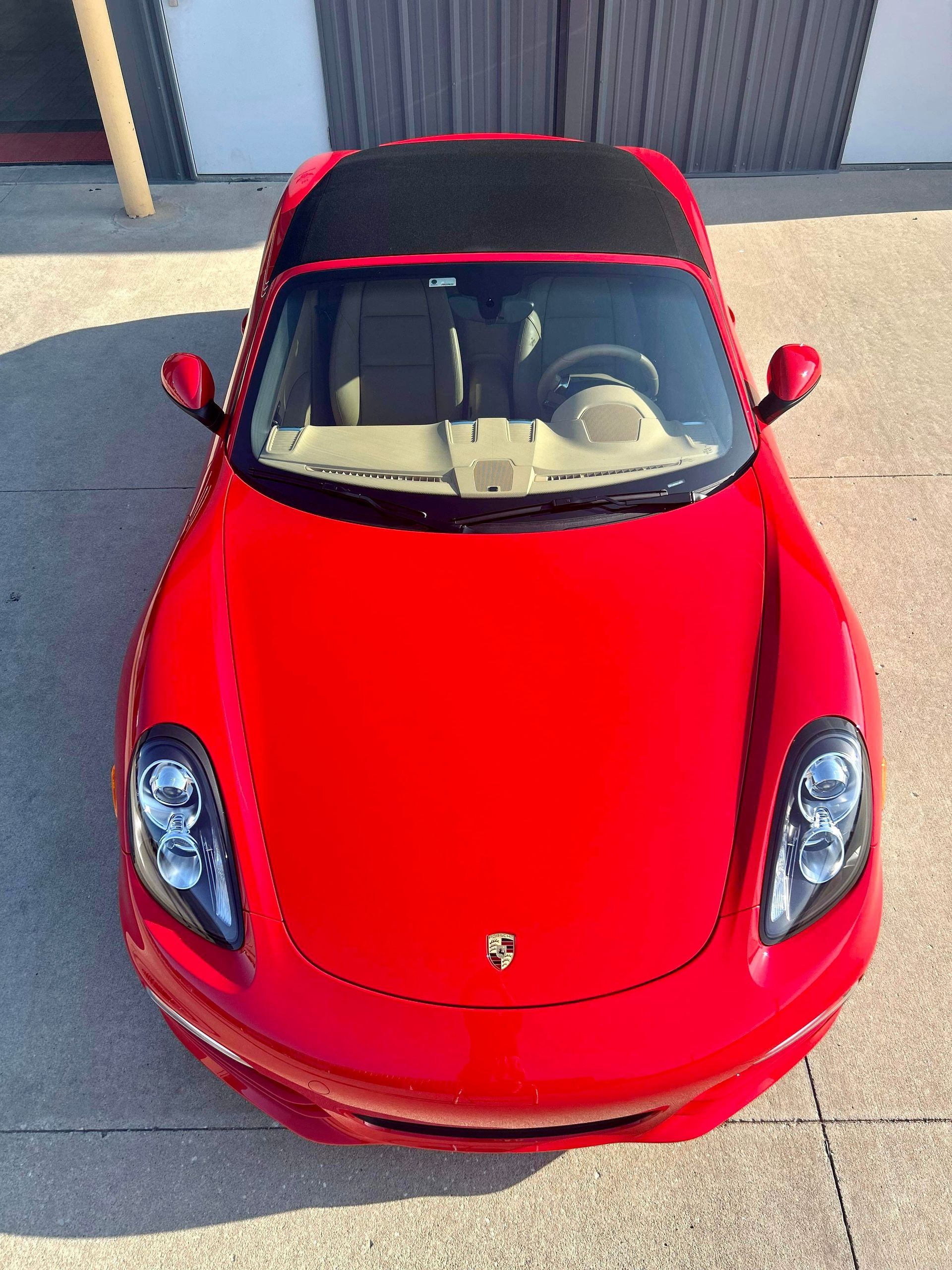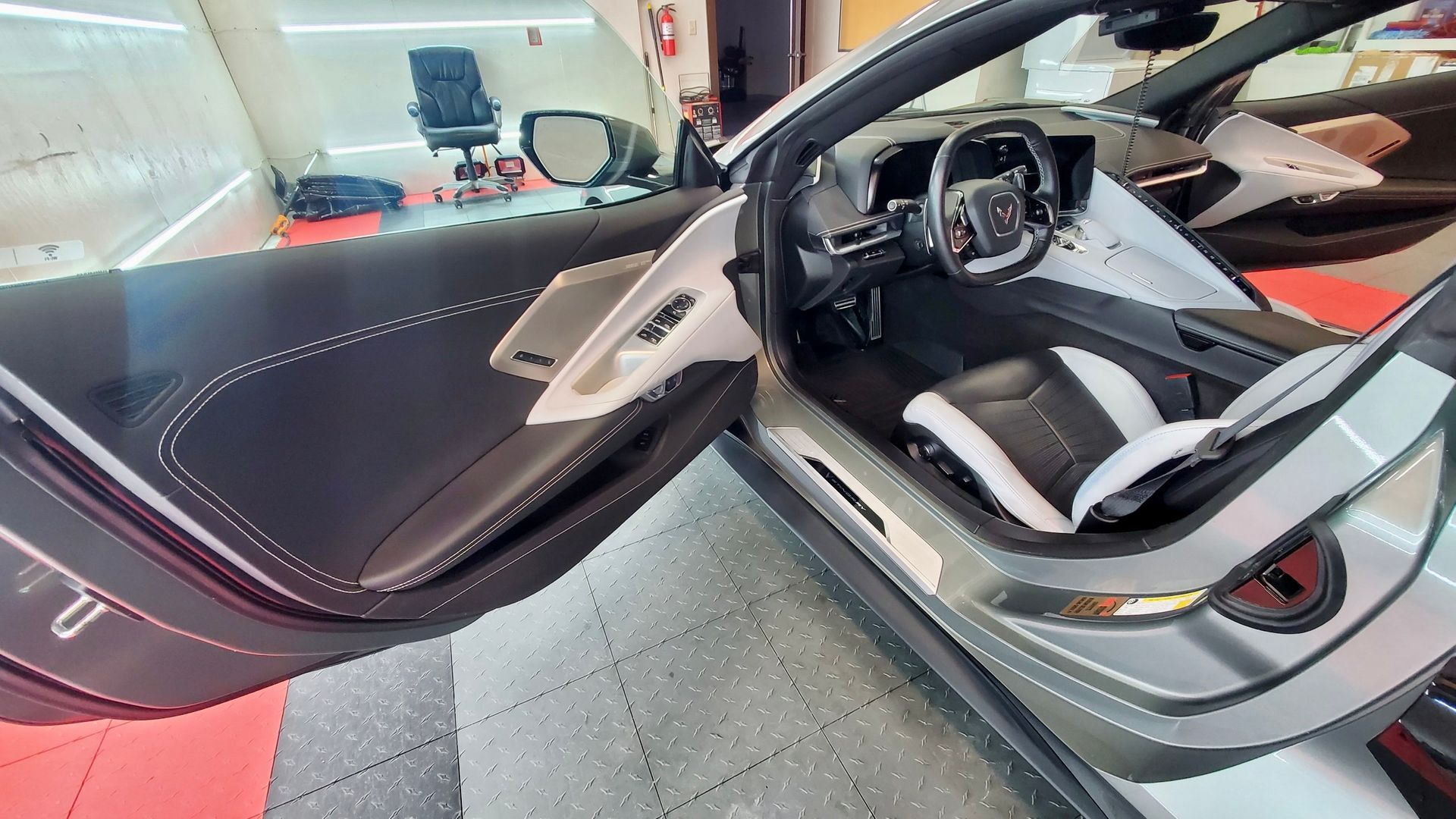Paint Correction vs. Polishing: What’s the Difference?
When it comes to keeping your car looking its best, two terms often come up: paint correction and polishing. Both processes can enhance your vehicle’s appearance, but they serve different purposes. If you’re like many car owners who feel overwhelmed by the options, you may wonder which one is right for you. Understanding the distinctions between these two approaches can save you time and money and keep your car's finish in top shape for years to come. In this article, we’ll break down paint correction and polishing, helping you make an informed choice for your prized possession.
Paint correction involves a meticulous process aimed at removing surface imperfections such as swirl marks and oxidation from a vehicle's clear coat to restore its clarity and shine, primarily before applying protective coatings like ceramic. In contrast, polishing generally refers to the broader technique of enhancing the paint’s appearance and gloss without necessarily focusing on correcting defects, often utilizing various methods and products depending on the paint's condition.
Paint Correction Explained
Paint correction is an intricate detailing process designed to remedy imperfections on a car's paint surface, which can greatly affect its overall look and longevity. These imperfections manifest as swirl marks, oxidation, or even deeper etching from abrasive substances like bird droppings or tree sap. Imagine staring at your once glossy vehicle only to be met with a dull surface marred by these blemishes; the sparkle you loved is lost. This scenario is where paint correction comes into play—it helps restore that luster.
The essence of paint correction lies in its methodical approach. It's not merely about applying a fresh coat of wax or shine; rather, it involves a multi-step process often requiring machine polishing. Detailers utilize various grades of polishing pads along with specialized compounds tailored for different stages of the correction process. Each polish is carefully selected depending on the severity of swirls or defects. As you move through the stages, you progressively remove layers of clear coat, revealing the pristine paint beneath, much like polishing a precious gemstone until it sparkles anew.
Interestingly, according to experts in the field, it's reported that paint correction can enhance a vehicle’s resale value significantly. This statistic emphasizes how valuable proper maintenance and care can be in preserving your investment.
While modern techniques have evolved—with many detailers now favoring dual-action or rotary polishers over traditional methods—the core principle remains the same: meticulous attention to detail. It’s essential to understand that the process isn't just a quick touch-up; rather, it demands patience and skill to ensure all imperfections are addressed properly. It might take someone several hours of skilled work to yield results that last for years. This importance shouldn't be underestimated when considering how quickly time can wear down clean surfaces.
If you're wondering if your relatively new vehicles could benefit from paint correction, remember that even brand-new cars are not immune to imperfections. Many owners of new vehicles, like the Subaru Outback, may find minor defects due to factory processes. These defects can sometimes be more pronounced due to thin paint applications common with specific manufacturers. Therefore, discussing any concerns with your detailer before service is crucial.
The goal here is simple—to preserve and enhance your vehicle's beauty while ensuring its long-term health. Just as you wouldn’t ignore minor swirls on a beautiful wooden table, why overlook them in your car? Engaging in regular paint correction revives a neglected finish and stands as a testament to one’s commitment to maintenance.
Polishing Your Car
Polishing restores the gloss and shine that your car loses over time, akin to a spa day. The right polishing technique can significantly enhance your vehicle's appearance by addressing minor surface imperfections such as swirl marks. In essence, polishing focuses on the outer coat of your car’s paint, making it look fresh and vibrant.
Every great polish starts with preparation, which involves washing and claying the car. This step is crucial—think of it as clearing away all the dirt, grime, and contaminants that might interfere with achieving a smooth finish. A thorough wash followed by claying allows the polishing compound to glide smoothly across the surface without dragging debris along, which could potentially cause further damage.
After preparing the vehicle, the next exciting phase commences: applying the polish itself.
During this part of the process, an orbital polisher paired with an appropriate polishing pad comes into play. Select your polish according to its abrasiveness; lighter polishes typically contain around 1-3% abrasives for minor defects, while heavier options can range from 5-10% for deeper swirl marks. For many detailers and enthusiasts, finding that perfect balance of polish and pad is akin to matching a fine wine to dinner—it makes a significant difference in the outcome.
After applying polish evenly across sections of the car, it’s time to buff the surface. This step requires both patience and technique; using consistent pressure and overlapping passes helps ensure that every corner gets a touch of care. As you work, you'll watch those dull spots transform into a shiny finish that reflects light beautifully.
However, it's essential to note that while polishing does wonders for enhancing your vehicle's appearance temporarily, it may not eliminate deeper defects embedded within the paintwork. Those might re-emerge after some time as the polish diminishes due to exposure to elements, indicating that routine or seasonal polishing is beneficial for keeping things looking sharp without resorting to paint correction every time.
Many car enthusiasts echo sentiments about regular polishing, sharing experiences about how just a couple of sessions each year keep their vehicles appearing freshly detailed—a smart investment in both aesthetics and pride of ownership.
Specific Paint Issues Targeted
Different paint problems require different treatments, and this is where the distinction between paint correction and polishing becomes evident. Paint correction is the preferred solution for severe defects like clear coat swirl marks and oxidation. This process digs deeper into the paint's surface than polishing, ensuring that real issues are addressed rather than just masking them.
Clear Coat Swirl Marks
Clear coat swirls frequently occur from improper washing techniques or inadequate drying methods. Autotrader highlights that these swirl marks can lead to rusting if neglected. Paint correction effectively removes these blemishes by leveling the surface. The result is a long-lasting solution that restores not only the look but also the integrity of the vehicle’s exterior. By eliminating clear coat swirls, you enhance your car's protective barrier against further environmental damage while boosting its aesthetic appeal.
Oxidation and Fading
If you’ve ever seen a car left outdoors without protection, you might have noticed signs of oxidation—where the paint appears chalky or faded. That's not just an eyesore; it's a sign of degradation that will worsen over time. While polishing can provide a superficial improvement, it's paint correction that brings back the full clarity and shine of the original color. By addressing oxidation thoroughly, paint correction can rejuvenate the depth and vibrancy of a car’s finish, often restoring up to 80% of its original gloss.
Notably, while both processes strive for better vehicle appearance, understanding what each targets allows vehicle owners to make informed choices about their detailing needs. For instance, if you're undecided between polishing or pursuing paint correction, bear in mind that if you're dealing with severe issues such as deep swirls or significant fading due to sun exposure, opting for paint correction will yield far better results than a simple polish.
Recognizing these specific defects paves the way for making informed decisions about your vehicle’s care. As we turn now to explore the pros and cons of hiring professionals versus taking on these tasks yourself, we’ll examine the factors that may influence your choice of detailing services.
Choosing the Right Option for Your Car
Determining whether to opt for paint correction or polishing isn't just about wanting a shiny exterior; it's a decision that depends on various factors reflecting your circumstances. Begin by considering your vehicle’s paint condition. A thorough inspection is essential: grab a strong light source and inspect your car's surface closely for any damage—swirl marks and oxidation might be lurking there, diminishing the visual appeal of your ride.
Assessing Your Car’s Condition
In this analysis, clarity is paramount. The more imperfections you find, the more compelling a case for paint correction becomes. This process can remove 80% to 95% of those pesky surface flaws, allowing your car to gleam like it just rolled out of the showroom. If only minor issues are apparent, then polishing may suffice as it focuses more on enhancing gloss and shine rather than making deep corrections.
While navigating through these options may seem overwhelming, keep in mind that a well-maintained car attracts attention and maintains its value over time.
Budget and Long-term Goals
Next, consider your budget and long-term aspirations for your vehicle. While the price of paint correction can depend on the severity and labor involved, it's an investment in durability with results lasting one to three years when maintained properly. On the other hand, if you’re looking to spruce things up for an event or quick sale, the cost-effective nature of polishing could be appealing. Polishing typically can be completed much quicker than full paint correction.
For those who find satisfaction in hands-on projects, visiting our website at letsrollcoatings.com provides excellent resources, including trusted professionals and DIY kits tailored for every skill level.
Whether you're aiming to make your car sparkle before an important show or simply want to maintain its appearance over time, choosing the right service will ensure that your vehicle receives the care it deserves.
If you're ready to discuss the best options for your vehicle's appearance or need assistance deciding between paint correction and polishing, don’t hesitate to reach out. Call us at (316) 295-0787 or visit
letsrollcoatings.com/contact-us.
